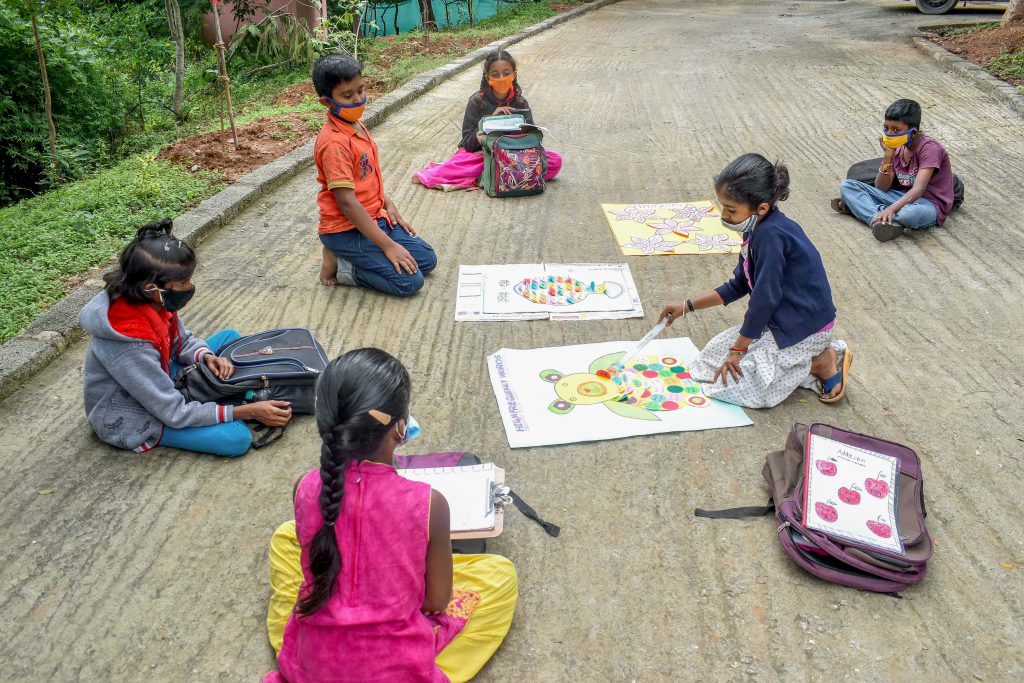“In art, the hand can never execute anything higher than the heart can imagine.”
Ralph Waldo Emerson
Radhika is a young teenager of 13. For the past few days, she has been showing early symptoms of mental health illness. Her teacher noticed a change in her behaviour and encouraged her to meet the school counsellor. The counsellor after understanding the reasons behind Radhika’s aloofness, advised her to undertake painting, writing or anything that fosters creativity. She did that and it eventually improved her mental health.
Many of us engage in creative activities like writing, acting, sketching, or dancing because we find them enjoyable. We know intuitively that being creative is healthy for us and that being passionate about our creative pursuits makes us happy. But what does science tell us about the advantages of creativity?
No matter what path we have chosen to free up our imaginations and aim for unrestricted self-expression, it’s obvious that creating things is fundamental to what it is to be a person. Some people pursue creative endeavours as a pastime, while others do it for a profession.
We have been producing art since prehistoric times; more than 39,900 years ago, our predecessors scratched some of their earliest impressions on cave walls, including the contour of their hands and primitive animal images.
People could even say that the need to create things is ingrained in our DNA. Over the course of human history, we have learned to build tools, shelters, food and make medications for illnesses.
A lot of medical studies have suggested that art, and more especially, being creative, is quite beneficial for our mental and physical well-being.
We’ll give some context of mental illness and then discuss art as its remedy.
Mental Health Illness
Childhood trauma makes a person more susceptible to negative physical, mental and socio-educative consequences over the course of their lifetimes. According to research, exposure to four or more negative events increases the likelihood of negative health effects.
Data from 37 research were combined, showing that negative experiences increased the risk of smoking, excessive drinking, poor self-rated health, cancer, heart disease, and respiratory disease by 2 to 3 times. The odds of engaging in hazardous sexual behaviour were also 4-6 times higher and the odds of experiencing interpersonal violence as a victim or perpetrator were 7-8 times higher.
Fighting Mental Health Illness with Art
Both adults and children can benefit from art therapy to reduce stress. There is a good relationship between art and mental wellbeing. Creative pursuits like painting, drawing and sculpture have shown to reduce stress and foster mental serenity.
Making art is a soothing diversion. As you concentrate on the finer points of the artwork you are producing, worries are put aside. One of the reasons art therapy is used to treat Post-traumatic stress disorder (PTSD) is the advantages of this mental comfort. For people of all ages, adult colouring books are a popular form of anti-anxiety medium.
The encouragement of imaginative thinking and creativity in both children and adults is another advantage of art. It also improves one’s ability to solve problems. People are inspired to come up with their own solutions because there is no wrong answer in the world of art. Similar to learning a new language, flexible thinking stimulates your brain and gets it ready for difficult tasks.
Additionally, creativity is a very mobile activity, and this mobility has a number of advantages. For instance, a research on breast cancer survivors revealed that dancing increased participants’ shoulder function and that it improved their perception of their bodies.
Also, dancing might be a good way to get or keep fit. 2014 saw the media sensation of a woman who dropped 100 pounds by following her dancing routine.
To practise any art, no matter how well or badly, is a way to make your soul grow. So do it.”
Kurt Vonnegut
Art Helps Forget Pain
Depression, discomfort, anxiety and stress are frequently present in patients with chronic health issues. You can temporarily reduce your loved ones’ worries by taking them to see beautiful art when they are dealing with ongoing health issues.
For adults, children, and elders, visiting museums and participating in art walks may be a positive, entertaining experience. Immersing yourself and your loved ones in the arts has numerous positive effects on your health, whether you learn something new, rediscover your passion, or simply enjoy a peaceful time. Do spend some time with your imagination to enhance your health!
Create Pleasant Memories with Art
“The only time I feel alive is when I’m painting.”
Vincent Van Gogh
This may be the strongest argument in favour of taking your seniors to an art gallery or museum. For those suffering from severe brain illnesses like dementia and Alzheimer’s disease, art can improve cognition and memory. By giving people with these diseases a source of pleasure, boosting connectivity, and encouraging brain cell growth, making visual art can help them live better lives.
Closing Thoughts
While art therapy isn’t a panacea and may not be the best course of action for everyone, it frequently complements other conventional therapies and has some clear advantages. However, additional research is needed to completely comprehend how, why and when art therapy is effective.
Many studies have used tiny sample sizes, and a lot of research is based on the anecdotal experiences of physicians and patients. To persuade health insurance companies to accept art therapy as a type of treatment and pay for it, experts should carry out more randomised control trials and more extensive quantitative research. The discipline could also use more data on the effects of art therapy on various populations.
The flagship initiative of Smile Foundation, Mission Education (ME) places a great value on arts and the ME Team organises workshops related to music, painting and other art forms. Children enjoy such activities with many pursuing arts actively, opening their doors to the world of wonderment and magic.










One reply on “Arts and its Power to Improve Our Health”
Very interesting and it’s a fact… Art is an extraordinary methodology to take care of our mental health.